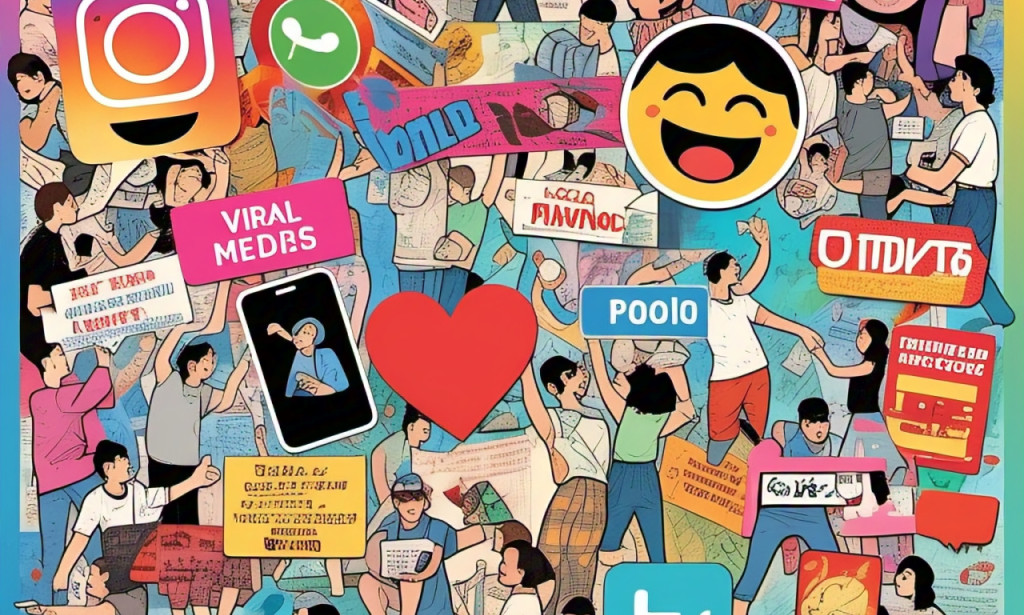Introduction
In today’s digital age, social media isn’t just a platform for sharing photos or updates; it has become a powerful force that shapes culture and influences our daily lives. One of the most intriguing aspects of this phenomenon is the rise of viral challenges. These challenges, often entertaining and engaging, have the ability to connect people across the globe, raise awareness for critical issues, and even set cultural trends. In this article, we’ll delve into the essence of viral challenges, their impact on society, and the ways they reflect and shape our cultural landscape.
What are Viral Challenges?
Viral challenges are activities or tasks that spread rapidly through social media platforms, encouraging users to participate and share their experiences. At their core, these challenges typically include:
A Specific Task or Theme: Each challenge has a defined activity that participants must complete. For instance, the Ice Bucket Challenge involved dumping a bucket of ice water over one’s head to raise awareness for ALS, while the Mannequin Challenge required participants to freeze in place as if they were mannequins.
A Call to Action: Most challenges invite participants to nominate friends or family, creating a ripple effect. This not only increases engagement but also fosters a sense of community among participants.
A Hashtag: Challenges are often accompanied by a specific hashtag that helps categorize and track participation across various platforms. For example, the hashtag #IceBucketChallenge became synonymous with the ALS awareness campaign.
The Impact of Viral Challenges on Culture
1. Community Building:One of the most significant impacts of viral challenges is their ability to foster a sense of community. When people participate in a challenge, they often feel a connection to others who are doing the same. This communal aspect transcends geographical boundaries, allowing individuals from different backgrounds to unite for a common cause.
For instance, during the COVID-19 pandemic, challenges like the #StayHomeChallenge encouraged people to share creative ways to stay entertained while adhering to social distancing guidelines. This not only provided a sense of belonging but also helped combat feelings of isolation during a challenging time.
2. Awareness and Activism:Viral challenges have proven to be effective tools for raising awareness about important social issues. Many challenges highlight causes that might otherwise be overlooked.
.The Ice Bucket Challenge: Launched in 2014, this challenge raised over $115 million for ALS research. Participants shared videos of themselves pouring ice water over their heads, and in doing so, they not only had fun but also educated millions about the disease.
.BlackLivesMatter: This movement gained momentum through social media, with challenges encouraging users to share their experiences and advocate for racial justice. The challenge became a platform for discussing systemic racism and police brutality, amplifying voices that demanded change.
3. Creativity and Expression:Viral challenges often encourage participants to express their creativity. While the core task may be the same, individuals put their unique spin on challenges, resulting in a diverse array of interpretations.
For example, the BottleCapChallenge saw participants attempting to kick the cap off a bottle in creative ways, leading to an explosion of inventive videos. This not only showcases individual talent but also inspires others to think outside the box and engage in creative endeavors.
4. Influence on Trends:Viral challenges can significantly influence trends across various sectors, including fashion, fitness, and even food.
.Fashion: Challenges like the #OOTD (Outfit of the Day) encourage users to showcase their personal style, leading to trends that can quickly spread. What starts as a simple challenge can turn into a fashion movement, influencing what people wear.
.Fitness: The 30DaySquatChallenge, for instance, encourages participants to commit to a daily exercise routine. This not only promotes physical fitness but also creates a community of individuals supporting each other in their fitness journeys.
5. Cultural Commentary:Some viral challenges serve as a form of social commentary, reflecting current events or societal issues. They can highlight the absurdity of certain behaviors or the pressures of social media culture.
For example, the #DollyPartonChallenge, where users shared four different photos representing their professional and personal personas, sparked discussions about identity and the ways individuals curate their online presence. This challenge highlighted the contrast between real life and the often idealized versions presented on social media.
Conclusion
Viral challenges are more than just fleeting internet fads; they are powerful tools that shape culture in profound ways. By fostering community, raising awareness, sparking creativity, influencing trends, and providing cultural commentary, these challenges demonstrate the significant impact of social media on our lives.
As we continue to navigate this digital age, understanding the implications of viral challenges will be essential in comprehending the evolving landscape of culture. They remind us that, while we may be physically distant, we can still connect, engage, and inspire one another through the power of social media. The next time you see a viral challenge, consider its broader implications and the role it plays in shaping our collective cultural experience.

You must be logged in to post a comment.